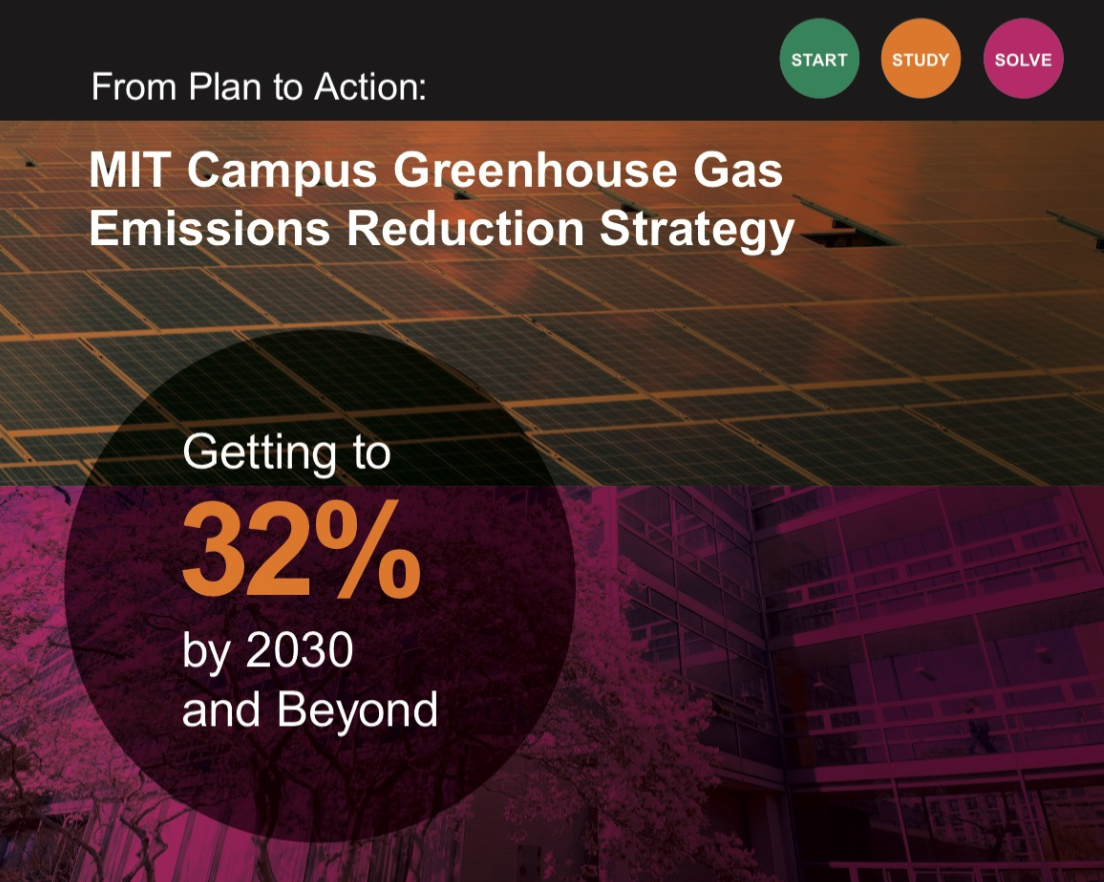MIT Campus Greenhouse Gas Emissions Reduction Strategy Published
MIT Campus Greenhouse Gas Emissions Reduction Strategy
Pathways for meeting MIT's carbon reduction goals
MIT published in 2017 its first greenhouse gas emissions reduction strategy that lays out the pathways and strategies that will guide the MIT administration in meeting or surpassing MIT's 32% campus greenhouse gas emission reduction goal. The report was developed collaboratively with the Office of Sustainability, Department of Facilities, Office of Campus Planning, and the Environment, Health and Safety Office. The strategy and implementation plan will be continually revised as new working scenarios and strategies emerge. A two-page summary of our progress to date on reducing total campus emissions by 18% is also available.
Currently, the pillars of our plan for mitigating emissions - informed by our past successes - include:
Scaling up campus-wide investments in energy efficiency across existing buildings, while making investments in new construction to maximize performance;
Renewing our Central Utilities Plant including replacement of our current combined heat and power system. Utility plant and distribution system upgrades are expected to reduce our emissions by 10 percent, offsetting a projected 10 percent growth; and
Investing in renewable energy by deploying additional renewable energy systems on campus and enabling off-site renewable energy production.
Planning for Climate Resiliency
Mitigating greenhouse gas emissions and adapting to climate changes are complementary strategies for reducing and managing the risks of climate change over time. With the impacts of climate change already manifesting in New England, MIT is simultaneously planning for a hotter and wetter future subject to more intense and extreme weather events. MIT has partnered with faculty, students, and staff to assess local climate vulnerabilities using newly developed, localized simulation models that are defining new approaches at the campus level.



